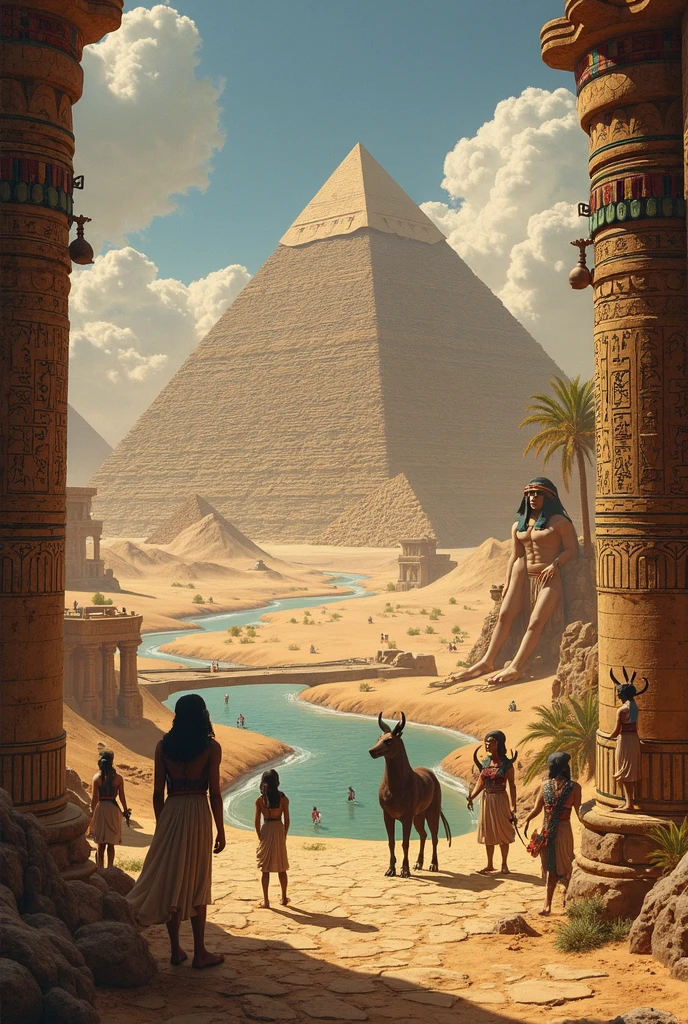Roman Mythology: Gods, Legends, and the Founding of Rome
Roman mythology is a rich tapestry of gods, heroes, and legends that shaped the cultural and religious identity of ancient Rome. At its heart stands Jupiter, the king of the gods, whose influence extended over law, order, and the sky. Alongside him, deities like Juno, Neptune, and Mars played pivotal roles in Rome’s spiritual and historical narratives, including the legendary founding of Rome by Romulus.
The Pantheon of Roman Gods
The Roman pantheon mirrored the society’s values, with gods representing aspects of life, nature, and governance. Below is a table highlighting key deities and their domains:
| God/Goddess | Domain | Greek Equivalent |
|---|---|---|
| Jupiter | Sky, Thunder, King of Gods | Zeus |
| Juno | Marriage, Childbirth | Hera |
| Neptune | Sea, Earthquakes | Poseidon |
| Mars | War, Agriculture | Ares |
Jupiter: The Supreme Roman God
As the chief deity, Jupiter was worshipped in grand temples like the Capitoline Triad alongside Juno and Minerva. His symbols—the thunderbolt, eagle, and oak—represented power and protection. Romans believed Jupiter safeguarded the state, and his festivals, such as the Feriae Iovi, were central to civic life.
Key Myths Involving Jupiter
- The overthrow of his father, Saturn, to establish divine order.
- His role as a judge in the conflict between Romulus and Remus.
- The abduction of Europa, a tale shared with Greek mythology.
Juno: Protector of Rome
Juno, Jupiter’s wife and sister, was revered as the guardian of women and the Roman state. Her temple on the Capitoline Hill housed sacred geese that famously warned of Gallic invasions. She was also associated with the Matronalia, a festival celebrating marriage.
Neptune and Mars: Gods of Sea and War
Neptune, often depicted with a trident, ruled the seas and was invoked by sailors for safe voyages. Meanwhile, Mars, originally an agricultural god, evolved into the embodiment of military prowess. The month of March (Martius) was named in his honor, marking the start of the campaign season.
The Founding of Rome: Romulus and Remus
The legendary founding of Rome in 753 BCE revolves around the twins Romulus and Remus, sons of Mars and the priestess Rhea Silvia. Abandoned and nursed by a she-wolf, they grew to establish a city—but rivalry led Romulus to kill Remus, becoming Rome’s first king.
Key Events in the Legend
- Birth and abandonment of the twins.
- Discovery by Faustulus, a shepherd.
- The dispute over the city’s location (Palatine vs. Aventine Hills).
- Romulus’s reign and the creation of Roman institutions.
Roman Mythology in Daily Life
Mythology permeated Roman culture through:
- Festivals: Like the Saturnalia in honor of Saturn.
- Architecture: Temples dedicated to gods dotted the city.
- Literature: Virgil’s Aeneid linked Rome’s origins to Troy.
For further reading, explore these resources: Encyclopædia Britannica on Jupiter, World History on Roman Religion, Theoi Project’s Jupiter Myths.
Descubre más artículos fascinantes en nuestra web y únete a nuestra comunidad en facebook.com/zatiandrops.
Lesser-Known Deities and Their Roles
While Jupiter, Juno, and Mars dominated Roman worship, lesser gods and goddesses played crucial roles in daily life. For example, Vesta, goddess of the hearth, was central to domestic rituals. Her priestesses, the Vestal Virgins, maintained the sacred fire in her temple, symbolizing Rome’s eternal flame. Another overlooked figure was Janus, the two-faced god of beginnings, gates, and transitions, after whom January is named.
Table of Minor Roman Deities
| Deity | Domain | Unique Trait |
|---|---|---|
| Vesta | Hearth, Home | Worshipped in a round temple |
| Janus | Beginnings, Transitions | Depicted with two faces |
| Pomona | Fruit Trees, Orchards | Associated with Vertumnus |
| Terminus | Boundaries | His statue couldn’t be moved |
The Influence of Etruscan and Greek Myths
Roman mythology was heavily influenced by neighboring cultures, particularly the Etruscans and Greeks. The Etruscan god Tinia merged with Jupiter, while the Greek Demeter became Ceres, Rome’s goddess of agriculture. This syncretism extended to rituals; for instance, the Roman Lupercalia festival shared similarities with Greek Arcadian traditions.
Adopted Gods and Their Origins
- Apollo: Retained his Greek name and role as god of prophecy.
- Diana: Adapted from Artemis, goddess of the hunt.
- Liber: A Roman version of Dionysus, linked to fertility.
Heroes and Mortals in Roman Legends
Beyond gods, mortal heroes like Aeneas bridged myth and history. Virgil’s Aeneid portrayed him as a Trojan prince who fled to Italy, becoming an ancestor of Romulus. Another figure, Horatius Cocles, defended Rome’s bridge against Etruscan invaders, embodying the ideal of Roman bravery.
Notable Roman Heroes
- Aeneas: Carried his father from Troy and founded Lavinium.
- Lucretia: Her tragic fate sparked the overthrow of the Roman monarchy.
- Cincinnatus: A farmer-turned-dictator who saved Rome.
Mythological Creatures and Symbols
Roman myths featured fantastical beings like the Lares (household spirits) and Penates (guardians of the pantry). The Capitoline Wolf, a symbol of Rome, immortalized the she-wolf who nursed Romulus and Remus. Even monsters had roles; the Lemures were vengeful ghosts feared during the Lemuria festival.
Creatures in Roman Lore
- Fauns: Forest spirits akin to satyrs.
- Harpies: Winged tormentors borrowed from Greek myths.
- Manes: Spirits of deceased ancestors.
Mythology in Roman Politics and Propaganda
Emperors like Augustus used mythology to legitimize power, claiming descent from Venus through Aeneas. Coins depicted gods endorsing rulers, and temples were built to deify emperors posthumously. The Ara Pacis altar showcased mythological scenes to promote peace under Augustus.
Political Uses of Myths
| Emperor | Mythological Connection | Symbol |
|---|---|---|
| Augustus | Descendant of Venus | Dolphin, Star |
| Nero | Identified with Apollo | Lyre, Sun |
| Commodus | Styled as Hercules | Lion Skin, Club |
Rituals and Sacrifices: Bridging the Divine and Mortal
Romans practiced elaborate rituals to appease gods. The lectisternium involved offering meals to deity statues, while haruspicy (reading animal entrails) guided decisions. Vestal Virgins faced burial alive if they broke their vows, underscoring the gravity of religious duties.
Common Roman Rituals
- Augury: Interpreting bird flights for omens.
- Taurobolium: Bull sacrifice for Cybele’s cult.
- Parentalia: Honoring ancestors with offerings.
The Legacy of Roman Mythology Today
From planet names (Mars, Venus) to literature like Shakespeare’s Julius Caesar, Roman myths endure. Legal terms like “jovial” (from Jupiter) and “martial” (from Mars) reveal their linguistic impact. Even modern sports teams, like the AS Roma soccer club, draw on these ancient symbols.
Explore these additional resources: Met Museum on Roman Religion, Oxford Research on Roman Gods, Penn Museum’s Roman World.
Descubre más artículos fascinantes en nuestra web y únete a nuestra comunidad en facebook.com/zatiandrops.
The Role of Oracles and Prophecy in Roman Mythology
Divination and prophecy played a central role in Roman religious practices. The Sibylline Books, a collection of oracular prophecies, were consulted during crises to interpret the will of the gods. These texts, housed in the Temple of Jupiter Optimus Maximus, were believed to have been sold to Rome’s last king, Tarquinius Superbus, by the Cumaean Sibyl, a prophetess of Apollo.
Famous Roman Oracles
- The Oracle of Delphi: Though Greek, its influence extended to Rome, especially during the Punic Wars.
- The Augurs: Priests who interpreted omens, such as bird flights or lightning strikes.
- The Haruspices: Etruscan diviners who read animal entrails, a practice adopted by Romans.
The Cult of Mithras: A Foreign Influence
One of the most intriguing aspects of later Roman religion was the cult of Mithras, a mystery religion centered around the god Mithras, who was believed to have slain a sacred bull. This Persian-inspired cult gained popularity among Roman soldiers and emphasized loyalty, discipline, and secrecy. Temples, known as mithraea, were often built underground and featured elaborate iconography.
Key Elements of Mithraism
| Symbol | Meaning | Role in Rituals |
|---|---|---|
| Tauroctony | Mithras slaying the bull | Central to initiation rites |
| Cautes & Cautopates | Torchbearers | Symbolized sunrise and sunset |
| The Seven Grades | Initiation levels | Included “Raven” and “Lion” |
Roman Mythology in Art and Architecture
The Romans immortalized their gods and myths through stunning artworks and monumental architecture. Frescoes in Pompeii depicted scenes like Venus rising from the sea, while statues of Mars Ultor (Mars the Avenger) adorned public forums. The Pantheon, originally a temple to all gods, remains one of the best-preserved examples of Roman religious architecture.
Notable Mythological Artworks
- The Farnese Hercules: A marble statue showing Hercules resting after his labors.
- The Ara Pacis: An altar featuring reliefs of mythological founders.
- The Column of Trajan: A spiral frieze depicting battles under divine favor.
Women in Roman Mythology
While often overshadowed by male gods, goddesses and mortal women played pivotal roles. Venus, as the mother of Aeneas, symbolized Rome’s divine origins. Meanwhile, Livia Drusilla, wife of Augustus, was deified after her death, reinforcing the imperial family’s sacred status. Mortal women like Cloelia, who escaped Etruscan captivity, became legendary for their bravery.
Influential Goddesses and Mortals
- Minerva: Goddess of wisdom, often depicted with an owl.
- Bona Dea: A fertility goddess worshipped exclusively by women.
- Cornelia: A noblewoman celebrated as the ideal Roman mother.
The Decline and Transformation of Roman Mythology
With the rise of Christianity, Roman mythology gradually faded as the state religion. However, many traditions were repurposed—Saturnalia influenced Christmas celebrations, and saints absorbed attributes of former gods (e.g., St. Michael replacing Mercury as a psychopomp). Even today, traces of Roman myths persist in holidays, literature, and cultural symbols.
Surviving Elements of Roman Myths
| Roman Tradition | Modern Equivalent | Connection |
|---|---|---|
| Lupercalia | Valentine’s Day | Fertility rites |
| Sol Invictus | Christmas (date) | Winter solstice celebration |
| Genius Loci | Guardian angels | Protective spirits |
For deeper insights, visit: Livius on Mithraism, Ancient.eu on Roman Religion, Getty Museum’s Roman Art.
Descubre más artículos fascinantes en nuestra web y únete a nuestra comunidad en facebook.com/zatiandrops.
The Role of Roman Mythology in Warfare
Roman military campaigns were deeply intertwined with mythology, as soldiers and generals sought divine favor before battle. Mars, the god of war, was not only worshipped for victory but also for his agricultural ties, symbolizing Rome’s dual identity as a society of farmers and warriors. Before major conflicts, generals performed the evocatio, a ritual to “call out” enemy gods and persuade them to switch allegiance to Rome.
Military Rituals and Divine Signs
- Lustratio Exercitus: A purification ceremony for armies, involving sacrifices and prayers.
- Augury: Commanders observed bird flights to determine the gods’ will; unfavorable omens could delay battles.
- Devotio: A general’s vow to sacrifice himself and the enemy army to the gods in exchange for victory.
The Aeneid: Rome’s National Epic
Virgil’s Aeneid served as a mythological foundation for Rome’s imperial destiny. The poem’s hero, Aeneas, embodied pietas (duty to gods, family, and state), a core Roman virtue. His journey from Troy to Italy, including a descent into the Underworld, mirrored Odysseus’s adventures but with a distinctly Roman emphasis on fate and collective purpose.
Key Themes in the Aeneid
| Theme | Example | Roman Value |
|---|---|---|
| Fate vs. Free Will | Aeneas abandoning Dido for his destiny | Sacrifice for the greater good |
| Pietas | Carrying his father from Troy | Filial and civic duty |
| Divine Intervention | Jupiter’s prophecy of Rome’s greatness | Manifest destiny |
Roman Underworld Beliefs and Afterlife
Unlike the Greek Hades, the Roman Orcus or Dis Pater was less personalized but equally feared. Souls were judged by Minos, Rhadamanthus, and Aeacus, with the virtuous destined for the Elysian Fields and the wicked for Tartarus. The Lemuria festival appeased restless spirits, reflecting anxieties about the dead.
Afterlife Figures and Locations
- Pluto: Ruler of the underworld, later merged with Dis Pater.
- Proserpina: Abducted by Pluto, symbolizing seasonal cycles.
- The River Styx: Boundary between life and death; coins were placed on corpses to pay Charon the ferryman.
Mythological Monsters in Roman Lore
Roman legends featured terrifying creatures, often borrowed but adapted from Greek myths. The Lernaean Hydra appeared in Hercules’ labors, while the Cyclops Polyphemus was reimagined in the Aeneid as a blind monster hurling rocks at Aeneas’s ships. Unique to Rome were the Lares and Manes, protective spirits of households and ancestors.
Table of Roman Monsters and Spirits
| Creature | Origin | Role |
|---|---|---|
| Harpies | Greek | Punishers of the guilty |
| Lares Familiares | Roman | Guardians of the home |
| Empusa | Etruscan | Shape-shifting specter |
Roman Mythology in Modern Media
From films like Gladiator to video games such as Assassin’s Creed: Odyssey, Roman myths continue to inspire. Rick Riordan’s The Trials of Apollo series reintroduces gods like Apollo to young audiences, while HBO’s Rome dramatizes historical events with mythological undertones. Even corporate logos (e.g., the Versace Medusa) draw on this legacy.
Modern Adaptations
- Literature: Madeline Miller’s Circe reimagines Roman-Greek figures.
- Games: Total War: Rome II features religious mechanics.
- Art: Bernini’s sculptures, like Apollo and Daphne, blend myth with Baroque drama.
Explore these resources for further study: BBC on Roman Religion, History Channel’s Roman Gods, Roman Britain’s Gods.
Descubre más artículos fascinantes en nuestra web y únete a nuestra comunidad en facebook.com/zatiandrops.


